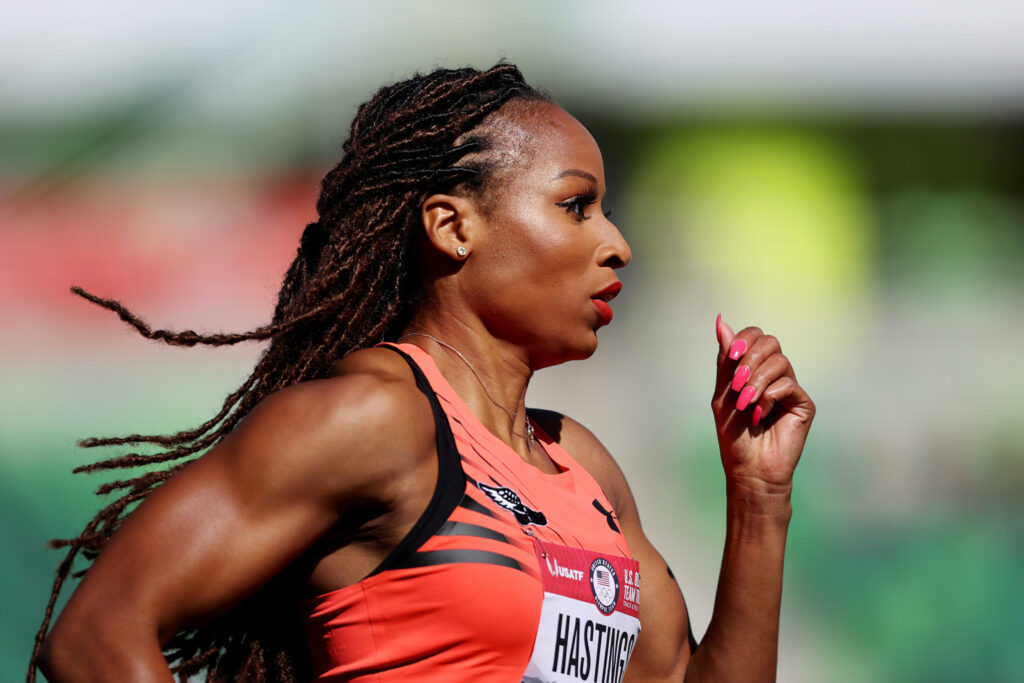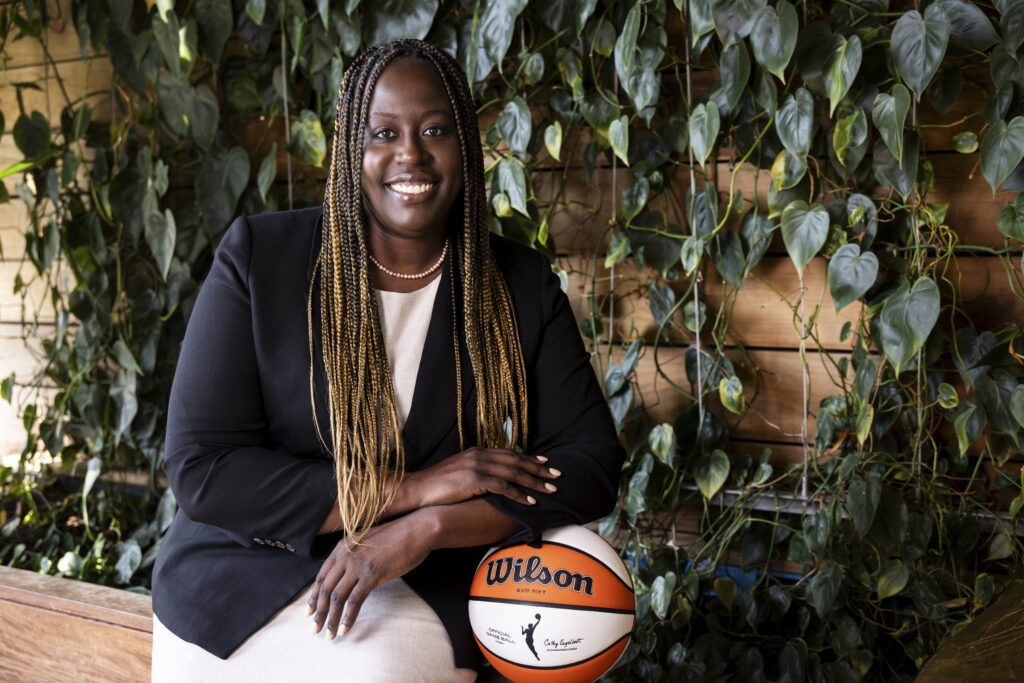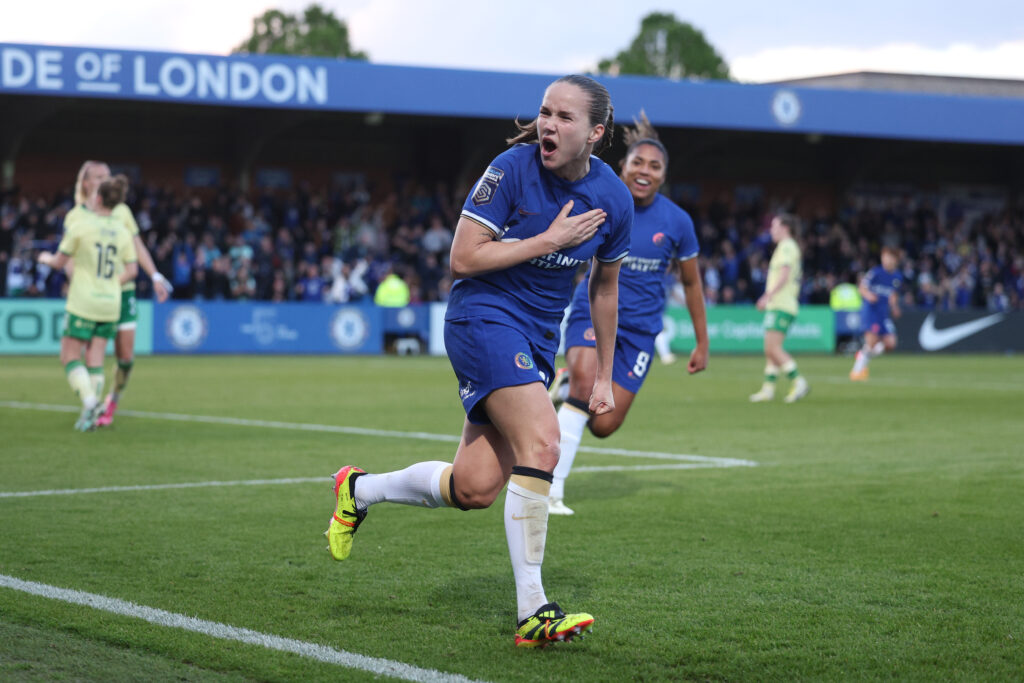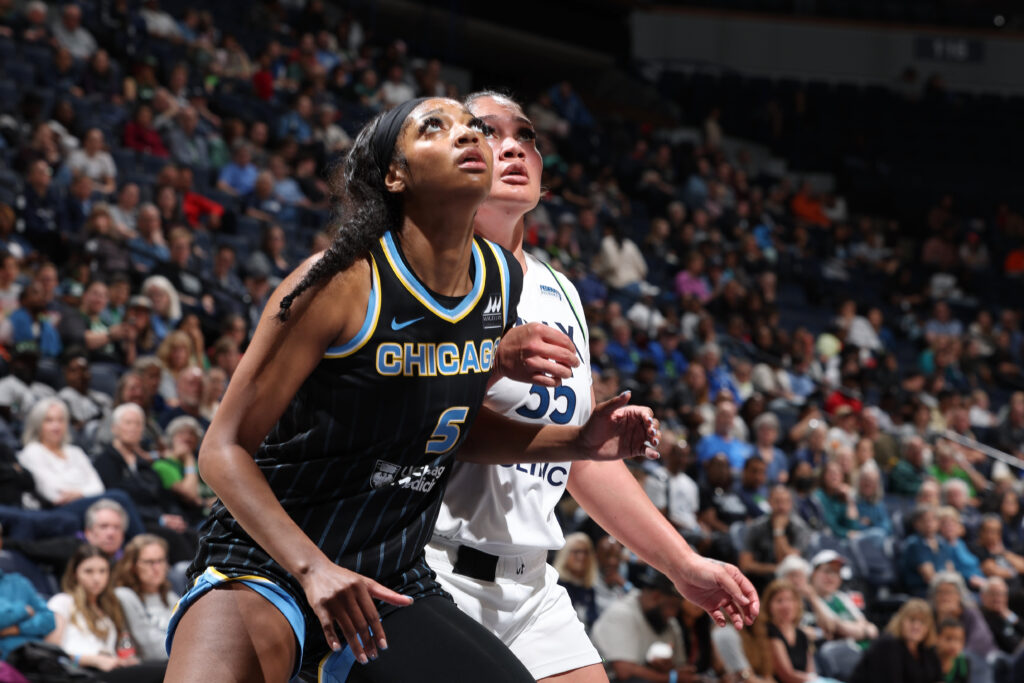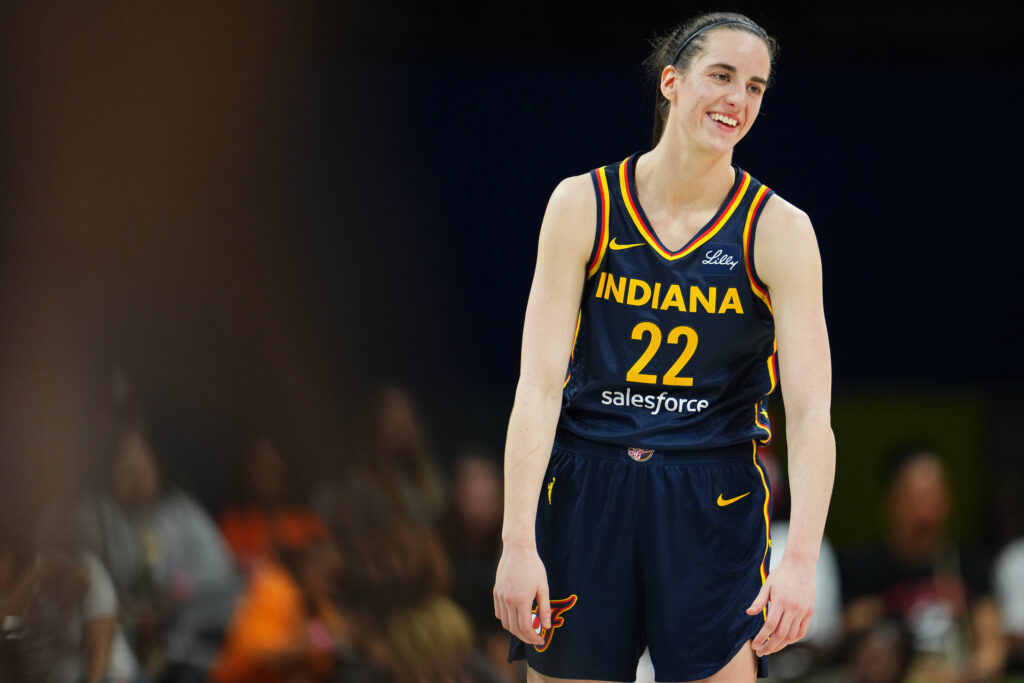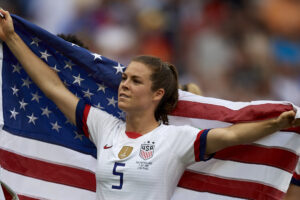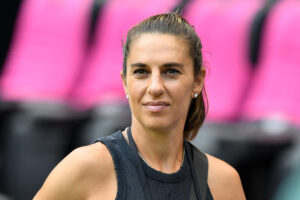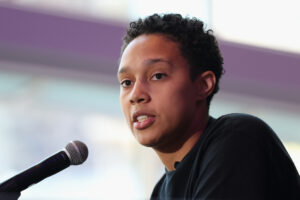For the first five months of her pregnancy, two-time Olympic gold medalist Natasha Hastings was terrified to tell her sponsors that she was expecting. Yes, the opportunities available to female athletes had improved a lot in her lifetime, but having a baby was still referred to as the “kiss of death” in elite running circles.
“The truth is that every single minute of the first five months I’d been pregnant, I was terrified,” she revealed in a 2020 op-ed. “I was worried about how it would change my fitness, my body. What would it look like, feel like, when I came back? What did this mean for coming back for the Olympics? What did this mean for the rest of my track career? Would I effectively have a career at all?”
Born in 1986, Hastings is a classic product of Title IX, the 1972 legislation guaranteeing equal access regardless of gender and celebrating its 50th anniversary next month.
After exploding onto the scene at the 2003 USATF Junior Olympics, the New York native earned an athletic scholarship to the University of South Carolina, where she was the indoor and outdoor 400M national champion her junior year. Turning pro in 2007, Hastings went on to win gold medals with Team USA in the 4×400 relay at both the 2008 and 2016 Olympics.
In 2019, she was laser focused on qualifying for Tokyo. She envisioned it as her third and final Olympic games, an opportunity to bid farewell to the sport that had given her so much and that she had given everything to. And then she found out she was pregnant.
In addition to her fears about the physical impact on her body and performance, Hastings worried that people would question her commitment — that choosing to become a mom signaled to the world she was not 100 percent invested in her running career. From Hastings’ point of view, there were hardly any examples of elite runners whose careers weren’t derailed by having children, and plenty of examples of those who were affected, including her own mother.
“My mother, Joanne Hastings, was once a world-class 200-meter sprinter herself during the early to mid-Eighties,” Hastings wrote. “She was a record-setting star in college and made the 1984 Olympic team for Trinidad & Tobago. After I was conceived, however, her career as an athlete was over.”
After putting it off for as long as she could, Hastings finally picked up the phone and called Under Armour to tell her title sponsor she was having a baby. It was a huge weight off her shoulders when they responded with positive support and excitement. Looking back on the conversation later, Hastings realized that having women in leadership roles was key to the end result.
“When I was signed to Under Armour, a woman signed me. When I made the call to Under Armour to tell them I was pregnant, I made that call to a woman,” Hastings said. “It’s important for women to be telling our stories and making decisions for us. A lot of times, women are left out of the conversation because the people making the decisions don’t look like us, don’t understand us.”

Hastings had well-founded reasons to worry about her sponsor’s reaction. Within a couple of weeks of her conversation with Under Armour, several Nike runners went public with complaints that the company had reduced their pay or suspended their contracts when they could not compete during and after pregnancy. Among the complainants was Allyson Felix, the most decorated American track and field athlete in Olympic history. In a powerful piece for the New York Times, Felix detailed her frustrating negotiations with Nike over maternity protections that ultimately caused her to walk away from the table completely.
After the stories came out about what pregnant female runners were dealing with, Under Armour called Hastings again to check on her and open up a dialogue about the stress she felt before telling them.
In August 2019, Hastings gave birth to her son Liam and got back to training within weeks, as she still had her sights set on Tokyo. When the pandemic further derailed those plans, Hastings continued to train as best as she could at home. But when she eventually stepped to the line at the U.S. Olympic Trials in June 2021, Hastings did not qualify for Tokyo.
Days after her heartbreaking finish, Hastings told Self Magazine, “There are two things that I’m thinking about when I think about what I want to do going forward. Am I emotionally able to do this again, and am I physically able to do this again?”
Whether or not she decides to continue pushing her body to reach maximum speed and aim for a future final farewell on the track, Hastings knows that, regardless of becoming a mom, running doesn’t last forever.
Now a graduate assistant coach for her alma mater, where she is pursuing her master’s degree in clinical mental health as well as running her own foundation and raising her son, Hastings is one of many changing the image of professional female athletes. As more women are starting families well before their athletic careers are over, they are looking closely at their leagues, their collective bargaining agreements, their contracts and their brand endorsements and pushing for the necessary changes.
“I am definitely encouraged by seeing the number of athletes that are willing to use their voice and platform,” Hastings told Essence Magazine last year. “I think we all can agree as women and as Black women, a lot of times our experiences are minimized, or we’re being told that we’re being dramatic.”
As a result of female athletes speaking out, leagues around the country have implemented new progressive pregnancy and maternity leave policies.
In 2019, after Felix and her colleagues spoke out, Nike announced an 18-month contract protection period during and after pregnancy for sponsored athletes. The WNBA’s 2020 CBA included fully-paid maternity leave, two-bedroom apartments for players with children and a childcare stipend. The following year, the league granted access to free fertility testing for all players. The NWSL Players’ Association, in its very first iteration of a CBA this year, secured eight weeks of paid parental leave for both birth and adoption. And Athletes Unlimited last year guaranteed paid leave for pregnancy and postpartum recovery for as long as needed during the season, as well as parental leave for adoption and for any player whose partner or spouse gives birth.
Having a child was once an imposed finish line for female athletes, like Hastings’ mom Joanne. But Hastings’ generation of women, who came of age after Title IX and were raised on the promise of equal opportunity, have carried that standard into their careers as pro athletes and into motherhood, changing the sporting landscape for generations of women to come.
Tessa Nichols is a contributing writer at Just Women’s Sports.
